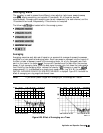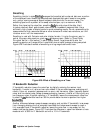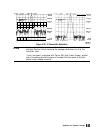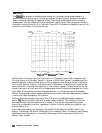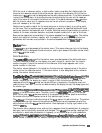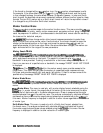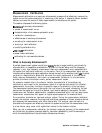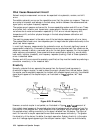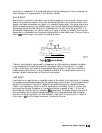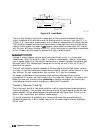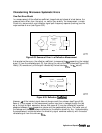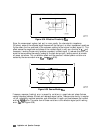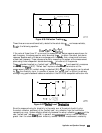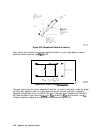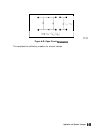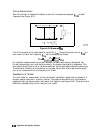
directivity is independent of the characteristics of the test device and it usually produces the
major ambiguity in measurements of low reflection devices.
Source Match
Source match is defined as the vector sum of signals appearing at the analyzer receiver input
due to the impedance mismatch at the test device looking back into the source, as well as to
adapter and cable mismatches and losses. In a reflection measurement, the source match error
signal is caused by some of the reflected signal from the test device being reflected from the
source back toward the test device and re-reflected from the test device (Figure 6-30). In a
transmission measurement, the source match error signal is caused by reflection from the test
device that is re-reflected from the source. Source match is most often given in terms of return
loss in
dB:
thus the larger the number, the smaller the error.
Coupled
Output
Incident
pg647d
Figure
6-30.
Source Match
The error contributed by source match is dependent on the relationship between the actual
input impedance of the test device and the equivalent match of the source. It is a factor
in both transmission and reflection measurements Source match is a particular problem in
measurements where there is a large impedance mismatch at the measurement plane. (For
example, reflection devices such as filters with stop bands.)
Load Match
Load match error results from an imperfect match at the output of the test device. It is caused
by impedance mismatches between the test device output port and port 2 of the measurement
system. As illustrated in Figure 6-31, some of the transmitted signal is reflected from port
2 back to the test device. A portion of this wave may
be
re-reflected to port 2, or part may
be transmitted through the device in the reverse direction to appear at port 1. If the test
device has low insertion loss (for example a
illter
pass band), the signal reflected from port 2
and re-reflected from the source causes a significant error because the test device does not
attenuate the signal significantly on each reflection. Load match is usually given in terms of
return loss in
dB:
thus the larger the number, the smaller the error.
Application and Operation Concepts 6-59



